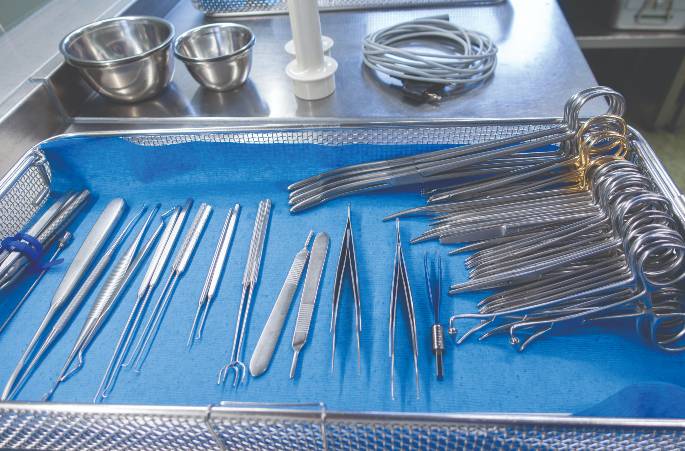A “Recipe” for Proper Manual Sterile Processing
A unique poster at the Healthcare Sterile Processing Association Conference presents how to prepare and perform sterile manual processing for delicate and sharp instruments.
Sterile processing
(Adobe Stock, unknown)

One of the easiest ways to present directions is through a recipe—what the ingredients are, how to use them, and in what order. An innovative presenter created a poster to explain the steps of sterile manual processing for delicate and sharp instruments.
A poster presented at the Healthcare Sterile Processing Association Annual Conference in Nashville, Tennessee, from May 6-10 titled, NYP [New York Presbyterian Hospital] Decon Diet, is a unique way to eliminate pathogens in the sterile processing department.Christopher Chisholm, CRST, CIS, Cer, Sherwin Phillips, CRCST, New York Presbyterian Hospital, New York, New York.
Presented as a set of recipes, the presenters gave directions on how to clean instruments in the sterile processing department. The recipe names were “PPE Soup,” “Preparation Pie,” “Test and Documentation Stew,” and “Manual Appetizer.”
“Manual Appetizer” begins with wearing appropriate personal protective equipment (PPE), identifying and sorting through sharp and delicate instruments, and determining which instruments need repair or sharpening, according to AAMI/ANSI ST9.7.5.2.1. Pretreat the instruments with an enzymatic or pH-neutral solution soak according to AAMI/ANSI ST79.7.6.1.
Then begin cleaning the instruments according to the manufacturer’s instructions for use. Use single-use brushes under water, rinse, and dry.
The “Preparation Pie” describes setting up your work area by cleaning all surfaces with disinfectant from top to bottom, including the inside of the sink, according to ANSI/AAMI ST79.E.2.Gather your tools for manual instrumentation cleaning. Finally, have disposable brushes of assorted sizes and lengths, and use disposable sponges on the more delicate instruments, according to AANSI/AAMI ST79.4.1 and AANSI/AAMI ST79.7.6.1.
The “PPE Soup” recipe begins with preparing the “cook” or sterile processing personnel for cleaning and disinfecting instruments.Ingredients include hospital laundered scrubs, bouffant caps, liquid-resistant covering with sleeves (eg, a backless protective gown, jumpsuit, or surgical gown), liquid-resistant shoe covers, fluid-resistant face masks and eye protection and eye protection such as goggles or full-length face shields, according to Ammi/ANSI ST79.4.5.2. After donning all of the above, choose and don eye protection subpart 1. Options listed on the poster were masks with attached face shields, full face visors, disposable visor glasses, or reusable goggles, according to OSHA 29 CFR Part 1910. Finally, don the pair of gloves.
Test and Documentation Stew was the recipe for verifying that the automated washer/disinfector is quality assured, according to AAMI/ANSI ST79.13.2. Also, daily test ultrasonic washers for the presence of cavitation energy. The document the test results for quality assurance, according to AAMI/ANSI ST79 14.2.3.
The Sterile Processing Conference Survival Guide: How to Make the Most of Your Next Event
March 25th 2025From expert speakers to cutting-edge tools, sterile processing conferences, like the 2025 HSPA Annual Conference and the SoCal SPA's Spring Conference, offer unmatched opportunities to grow your skills, expand your network, and strengthen your department's infection prevention game.
Redefining Material Compatibility in Sterilization: Insights From AAMI TIR17:2024
March 24th 2025AAMI TIR17:2024 provides updated, evidence-based guidance on material compatibility with sterilization modalities. It offers essential insights for medical device design and ensures safety without compromising functionality.